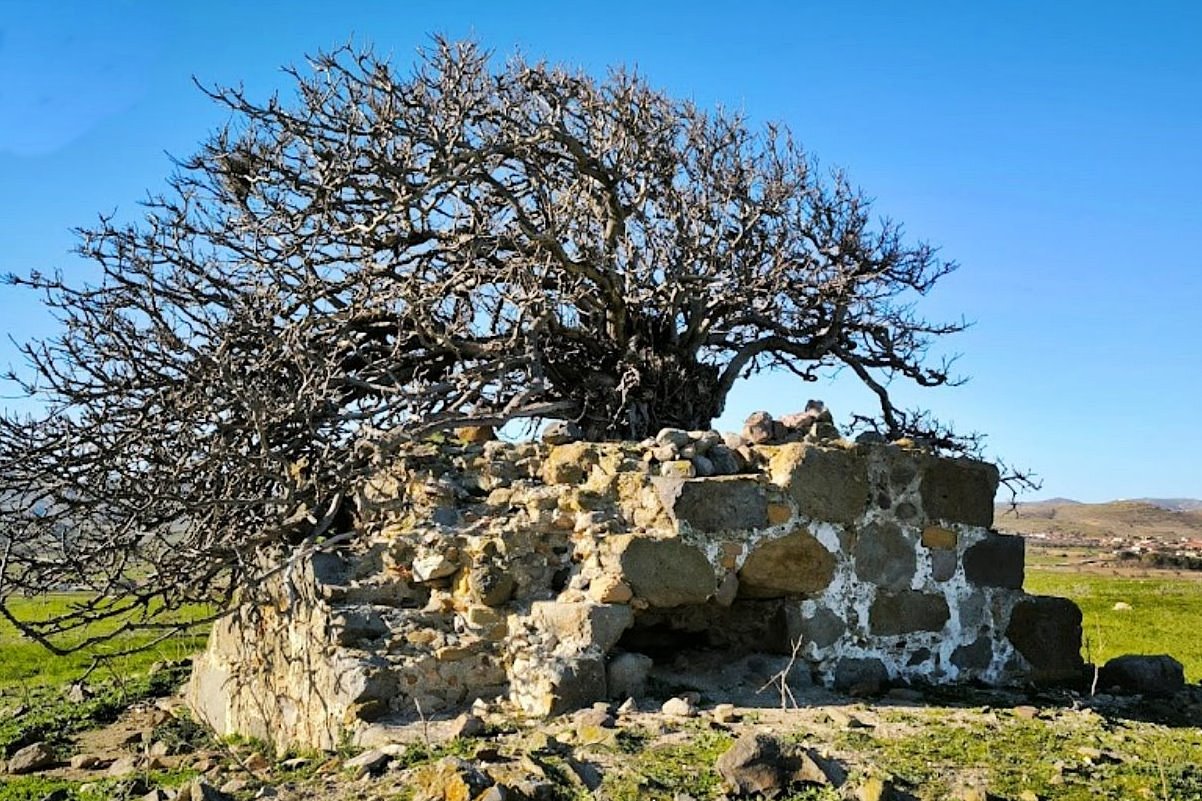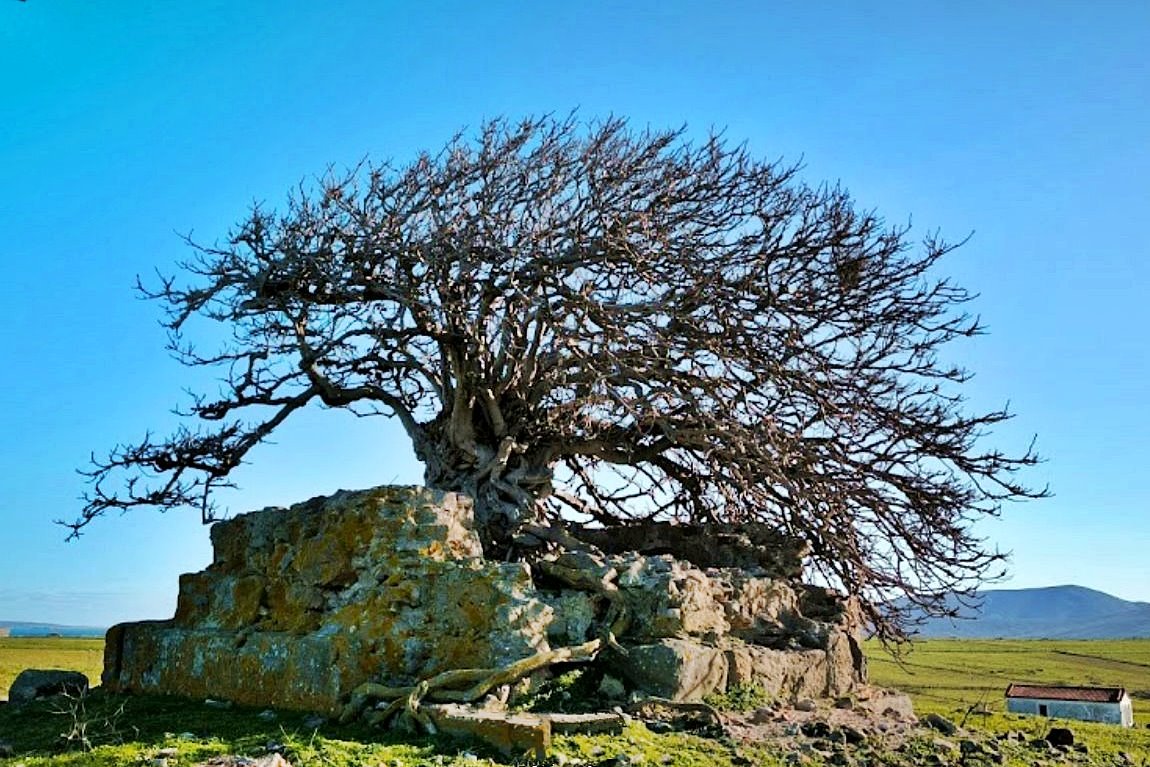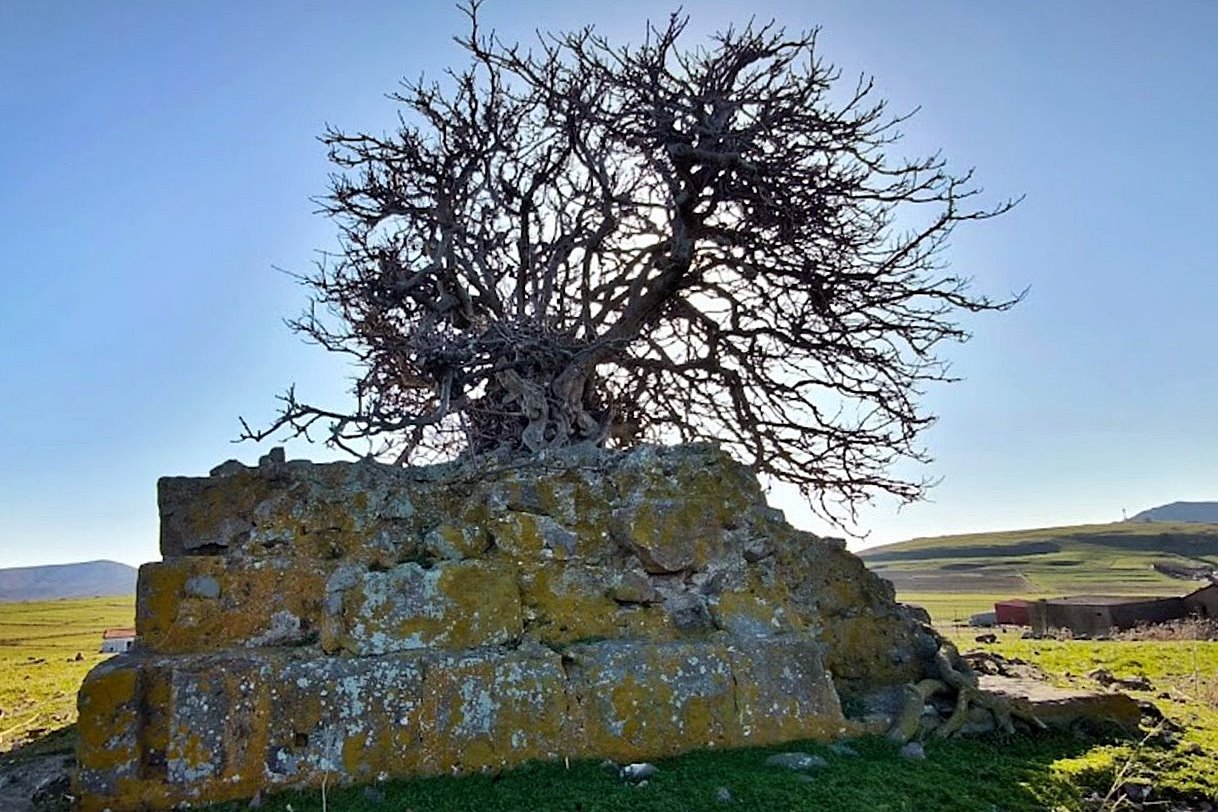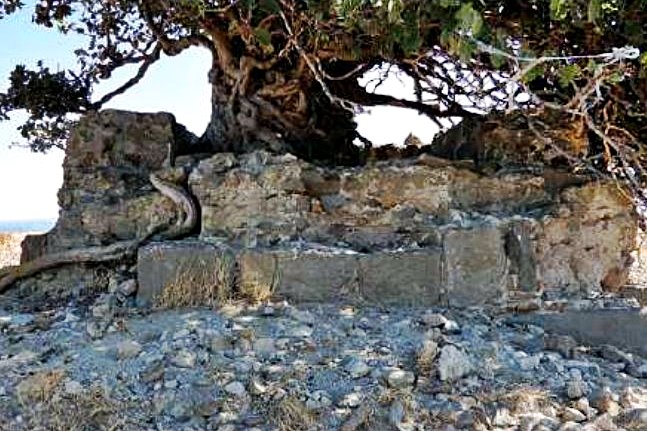Tsimandria, Lemnos, Lesbos,North Aegean
Tower of Filonikos
| Location: |
| In the fields northeast of the village Tsimandria of Lemnos island |
| Region > Prefecture: |  |
| North Aegean Lesbos | |
| Municipality > Town: | |
| City of Lemnos • Tsimandria | |
| Altitude: | |
| Elevation ≈ 40 m |
| Time of Construction | Origin | |
| Various periods | ANCIENT |
|
| Castle Type | Condition | |
| Ruined Tower |
In Ruins
|
Ruins of a tower in the fields 500m northeast of the village of Tsimandria of Limnos. The tower is located on top of a smooth and low hill (altitude 40m) called “Filonikos” (photo 6).
History
The history of the tower is not known. The large blocks used in its masonry show that it is definitely an ancient construction. The obvious use of binding mortar means that the ancient tower was modified and reused in later times.
So the tower on Filonikos hill already existed since antiquity (perhaps from the Hellenistic or Roman period). It may have been part of a larger fortification or stand alone, meaning that it was either a fryktoria or the tower of some farmhouse.
As for its use in later centuries, it is most likely to have been used as a monastic tower, something similar to the numerous towers of Halkidiki, whose purpose was to protect & survey the estates of the monasteries of Mount Athos.
For the area of Tsimandria, it is known that there were many monastic estates and dependencies. (Generally in Lemnos during the Late Byzantine Period there were large properties from 10 different monasteries, mainly of Mount Athos, but also of the Monastery of Patmos.)
Furthermore, near the place where Tsimandria is today there was a village called “Pteris” (and later “Fteri”) which was recorded in a document of 1285 that it had a monastery and a castle. The tower of Filonikos may have been part of that monastery. Or of the castle.
The monastery of Fteri was independent (it did not belong to any other monastery) and during the Venetian occupation (1207-1278) it was abandoned. It was reactivated after 1278 and from 1326 it was under the Monastery of Patmos. Some time during the Tourkokratia, it was abandoned.
The toponym “Filoneikos” is mentioned in an inventory of the monastery of Megisti Lavra of 1355. We do not know if this was related to the tower or the hill.
The Italian archaeologist Doro Levi who visited the hill in 1923 noticed around the tower many fragments and surface findings from the Roman and Byzantine periods which he considered proof of the monument’s long-lasting use.
An interesting element is the opening of the entrance gate (photos 1, 4) which today is almost at ground level (it is the original, ancient gate with carved stones). This means that a large part of the tower is currently underground by at least 2 meters.
The poor state in which the tower is today is probably due to its systematic removing of stones for the construction of newer buildings in nearby villages (something very common in abandoned towers in easily accessible places).
| First entry in Kastrologos: | October 2024 |
Sources
- Carlo De Domenico, «La prima esplorazione italiana dell'isola di Lemno (1923)», Annuario della Scuola Archeologica di Atene e delle Missioni Italiane in Oriente, 2020, vol. 98, pp. 577-580.
- Doro Levi, «Esplorazione dell'isola di Lemno», relazione inedita senza numero di protocollo 30.06.1929, Αρχείο SAIA (Ιταλικής Αρχαιολογικής Σχολής Αθηνών), 1929
- Fotini Kondyli, «Rural Communities in Late Byzantium: Resilience and Vulnerability in the Northern Aegean» Cambridge, Royaume-Uni de Grande-Bretagne et d'Irlande du Nord : Cambridge University Press, 2022
- Photos 1, 2, 3 from Google Maps, user dimitris birgiotis (Feb 2024)
|
|
| Access |
|---|
| Entrance: |
| Free access. |
| Other castles around |
|---|
| Dapia of Lemnos |
| Castle of Skala of Fisini |
| Castle of Kotzinos |
| Castle of Myrina |
| Towers of Fisini |













